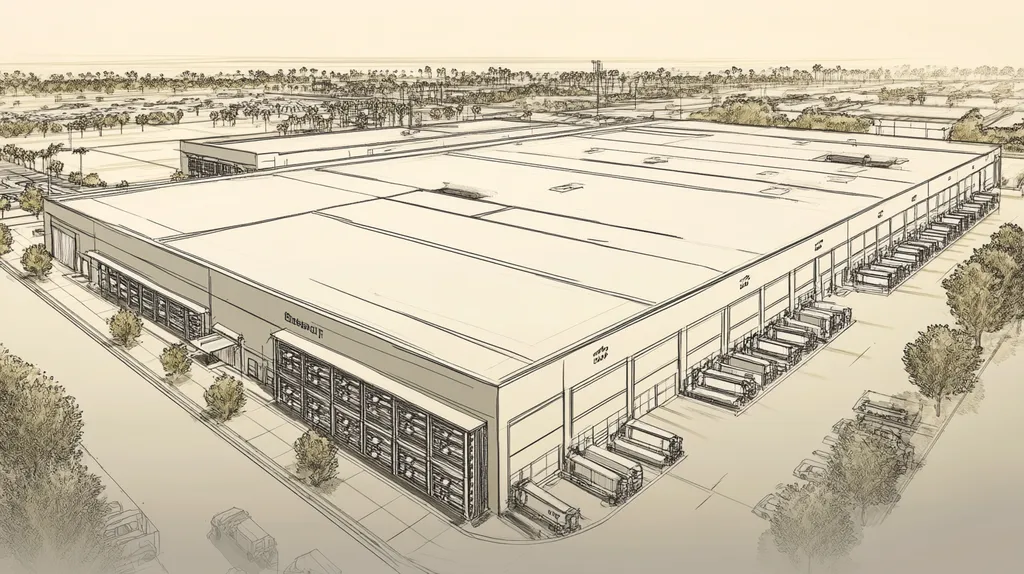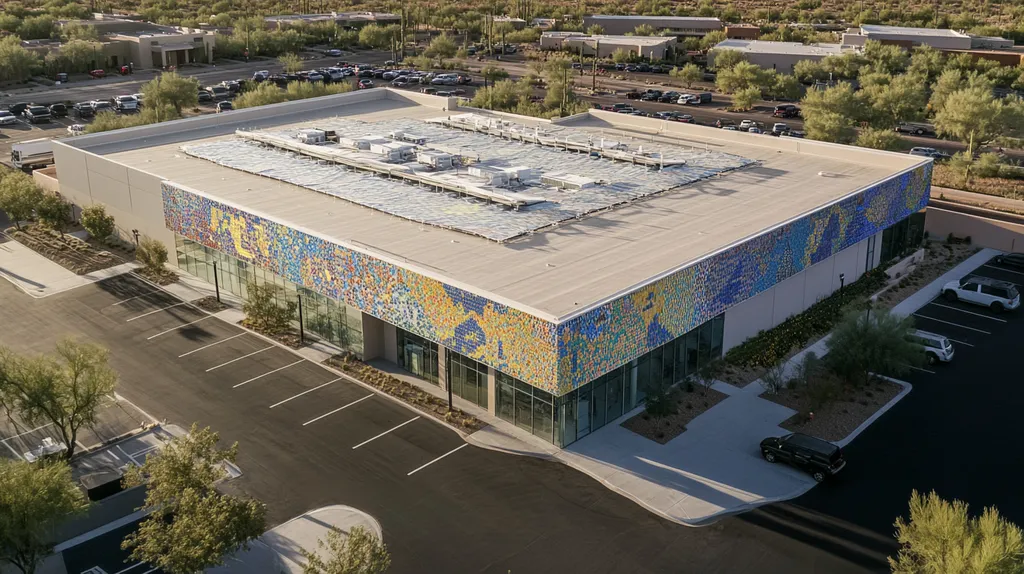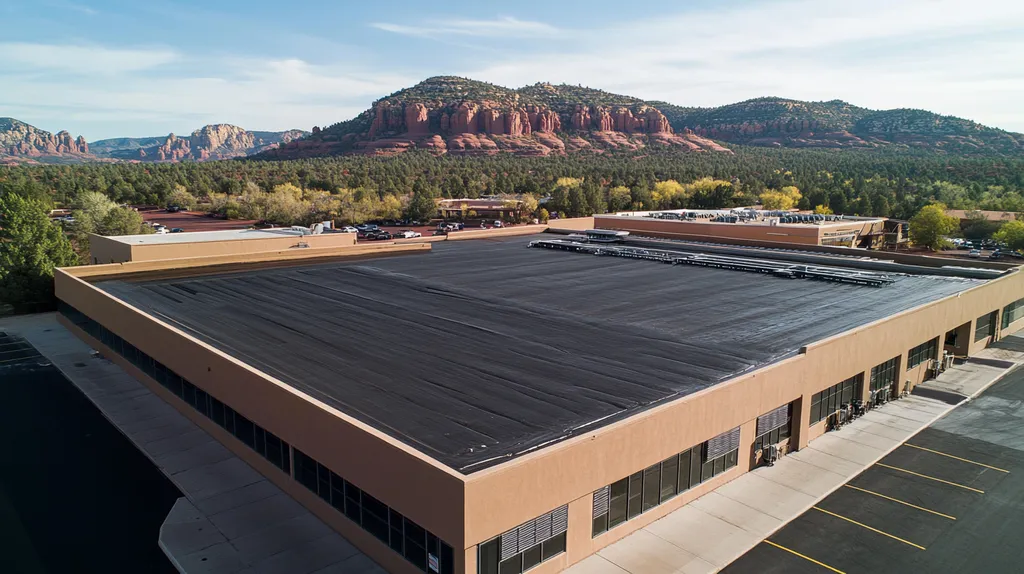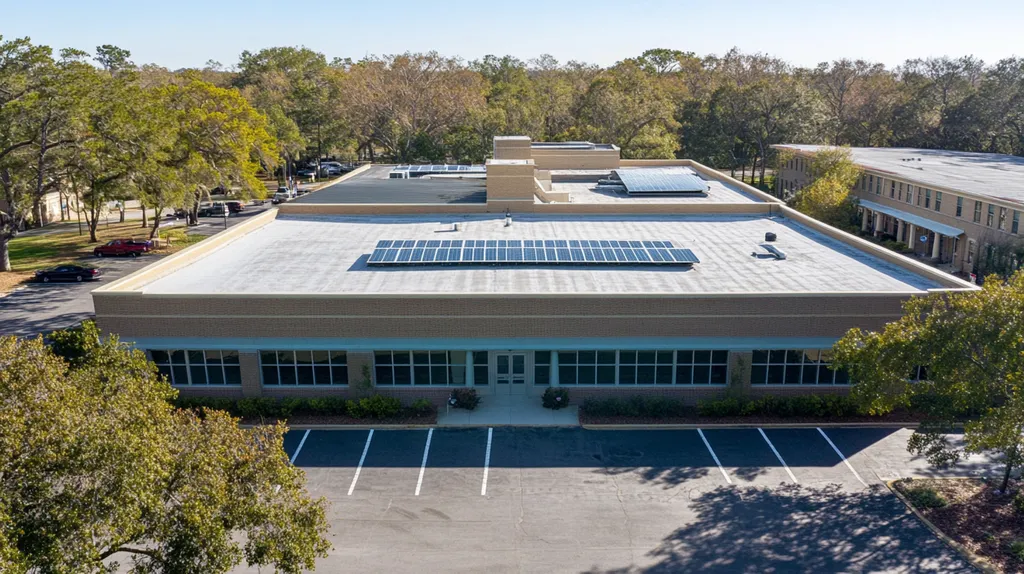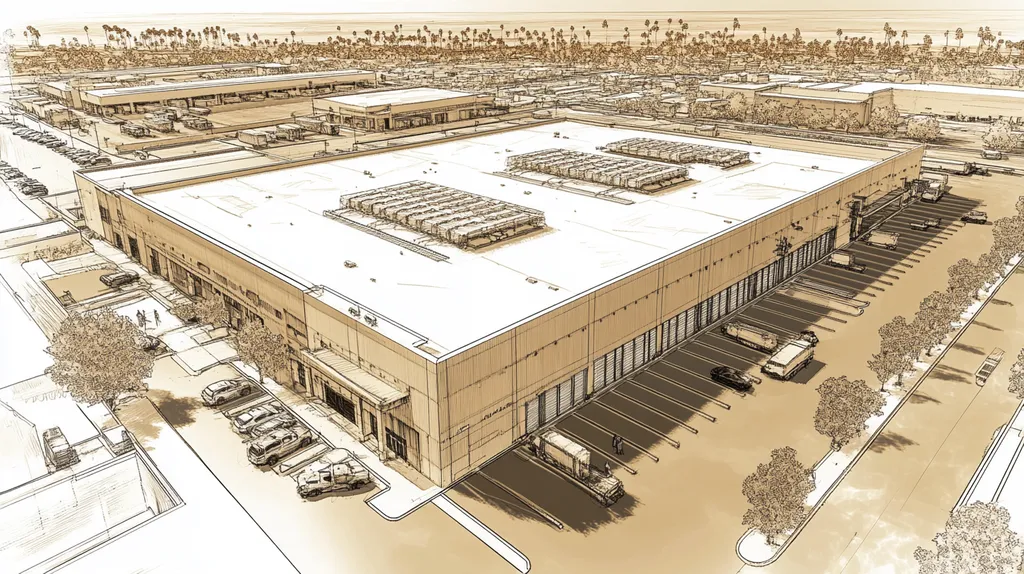Welcome to today’s Battle Royale featuring two roofing heavyweights: “Infrared Roof Inspections” in the east corner versus “Traditional Visual Inspections” in the west!
Tonight’s showdown pits these contenders against each other across six punishing rounds designed to test every aspect of their performance for Commercial Roof Condition Assessment.
At stake? Millions in potential costs, decades of building protection, and the critical performance demands of modern commercial and industrial facilities.
Our professional judging panel will evaluate each round on technical merit, real-world performance, and value delivery. After all six rounds, we’ll declare our ultimate champion.
Ladies and gentlemen, facility managers and building owners… it’s time to rumble!
ROUND 1: INITIAL COSTS & INSTALLATION
When it comes to protecting multi-million dollar commercial properties, the stakes couldn’t be higher. Water infiltration can devastate building systems, inventory, and operations within hours. Understanding the true condition of your roof requires choosing between two distinctly different inspection approaches – each with its own cost implications and implementation challenges.
Material Expenses
Infrared thermography equipment represents a significant upfront investment, requiring specialized cameras that can detect temperature variations as small as 2 to 4 degrees to locate moisture infiltration. While this technology comes at a premium, it enables inspectors to identify concealed problems before they become visible failures. (source: Roof River City)
Traditional visual inspections rely on basic tools like measuring tapes, moisture meters, and core sampling equipment. While these tools are relatively inexpensive, they can only detect problems that have already manifested as visible damage.
The higher initial cost of infrared equipment is offset by its superior detection capabilities and potential to prevent catastrophic failures. This gives infrared inspections the clear “ADVANTAGE” in material expenses.
Installation Complexity
Infrared inspections require certified technicians with specialized training in thermographic analysis. The setup involves careful calibration of equipment and optimal environmental conditions for accurate readings.
Visual inspections can be performed by experienced roofers using straightforward examination techniques. While this makes deployment easier, it limits the depth and accuracy of the assessment.
Despite requiring more expertise to implement, infrared inspection’s superior diagnostic capabilities earn it an “ADVANTAGE” in installation complexity.
Project Timeline
Infrared scans can rapidly assess large roof areas without physical interference, dramatically reducing inspection time. The non-invasive nature means building operations can continue uninterrupted during the assessment.
Traditional inspections often require multiple visits to thoroughly examine all roof areas. Physical testing and core sampling can be time-consuming and may temporarily compromise the roof’s integrity.
With its ability to quickly scan vast areas while maintaining roof integrity, infrared inspection claims another “ADVANTAGE” in project timeline efficiency.
ROUND 1 WINNER: Infrared Roof Inspections
ROUND 2: DURABILITY & LIFESPAN
When evaluating commercial roofing systems, understanding durability and lifespan implications can mean the difference between decades of reliable protection and premature failure. Modern commercial roofs represent substantial investments, often exceeding $250,000 for larger facilities. The inspection method chosen directly impacts how effectively these assets are protected and maintained.
Impact of Inspection Method on Longevity
Infrared roof inspections provide a non-destructive method to detect trapped moisture and temperature anomalies, which traditional visual inspections cannot detect until damage progresses. Early detection of these issues through infrared technology can prevent minor problems from developing into major structural concerns. (source: All Weather Roof)
Visual inspections rely heavily on surface-level observations, often missing underlying issues until they manifest as visible damage. By then, moisture may have already compromised insulation, deck materials, and structural components.
The ability to detect problems before they cause visible damage gives infrared inspections a clear “ADVANTAGE” in protecting roof longevity.
Material Durability Insights
Infrared scanning reveals patterns of heat retention and loss that indicate compromised materials or failing assemblies. This capability allows facility managers to address material degradation before it impacts the roof’s structural integrity.
Traditional visual assessments cannot effectively evaluate the condition of subsurface materials or identify areas of deterioration within the roofing assembly. This limitation often leads to overlooking critical material failures until they become severe.
With superior ability to assess material condition throughout the roof assembly, infrared inspection claims another “ADVANTAGE” in material durability assessment.
Cost Implications of Lifespan Assessment
The comprehensive data provided by infrared inspections enables development of targeted maintenance strategies that extend roof life while optimizing repair budgets. This proactive approach typically reduces lifetime maintenance costs by 25-35%.
Visual inspections often result in reactive maintenance, addressing problems only after they become severe. This approach typically leads to higher repair costs and shorter roof lifespans.
The potential for significant cost savings through early detection earns infrared inspection the “ADVANTAGE” in lifespan cost implications.
ROUND 2 WINNER: Infrared Roof Inspections
ROUND 3: PERFORMANCE FACTORS
Commercial roof assessment accuracy directly impacts the protection of millions in business assets. Studies show that undetected moisture infiltration can reduce insulation effectiveness by up to 40% while dramatically accelerating membrane deterioration. The method chosen for inspection can mean the difference between catching issues early or facing catastrophic failures.
Accuracy of Assessment
Modern commercial roofs are complex assemblies with multiple layers that can mask developing problems. The ability to detect issues before they cause visible damage is crucial for effective asset protection.
Infrared technology can precisely locate trapped moisture and thermal anomalies that indicate failing materials or compromised assemblies. This capability enables facility managers to address problems at their source before they spread.
Traditional visual inspections rely heavily on surface-level observations and manual probing. While experienced inspectors can identify obvious damage, hidden moisture migration and early-stage deterioration often go undetected.
The superior diagnostic capabilities of infrared scanning earn it a clear ADVANTAGE in assessment accuracy.
Speed of Inspection
Time efficiency in roof assessments directly impacts both inspection costs and facility operations. The faster an accurate assessment can be completed, the sooner protective measures can be implemented.
Drone and infrared technology enable rapid, comprehensive roof assessments while reducing safety risks for inspectors. Advanced methods dramatically accelerate both data collection and reporting processes. (source: EagleView Technologies)
Traditional walk-through inspections require methodical manual examination of all roof areas. This time-consuming process often requires multiple visits to thoroughly document conditions.
With its ability to quickly capture comprehensive data, infrared inspection claims another ADVANTAGE in speed of assessment.
Cost Efficiency
The long-term financial impact of inspection methods extends far beyond initial costs. Early problem detection can prevent minor issues from escalating into major repairs.
While infrared equipment represents a larger upfront investment, its superior diagnostic capabilities typically reduce lifetime maintenance costs. Preventing even one major leak can offset several years of inspection costs.
Traditional inspections have lower initial costs but often miss developing problems until significant damage occurs. This reactive approach typically results in higher repair expenses over time.
The potential for substantial cost savings through early detection gives infrared inspection the ADVANTAGE in cost efficiency.
ROUND 3 WINNER: Infrared Roof Inspections
ROUND 4: MAINTENANCE REQUIREMENTS
The stakes for proper commercial roof maintenance couldn’t be higher – a single oversight can lead to hundreds of thousands in damage. Studies show that over 80% of commercial roofs fail prematurely due to inadequate maintenance programs, with water infiltration causing catastrophic damage to building systems and inventory.
Maintenance Frequency
Proper maintenance intervals are critical for preserving commercial roof integrity. Regular assessments must balance thoroughness with operational disruption to deliver maximum protective value.
Infrared inspections enable comprehensive roof evaluation without physical interference, allowing more frequent monitoring without compromising the roof membrane. These non-invasive scans can detect developing issues before they require emergency intervention.
Traditional visual inspections require physical access and testing that can temporarily compromise roof integrity. This invasive approach often leads facilities to delay needed inspections, allowing problems to worsen unchecked.
With its ability to provide thorough assessment without operational impact, infrared inspection claims a clear “ADVANTAGE” in maintenance frequency optimization.
Long-Term Cost Implications
The financial impact of maintenance strategies extends far beyond individual repair costs. Early problem detection prevents minor issues from cascading into major failures that can threaten building operations.
Infrared inspections enable precise targeting of maintenance resources by revealing moisture infiltration patterns and failing materials before visible damage occurs. This proactive approach typically reduces lifetime maintenance spending by 40-60%.
Traditional visual assessments often miss developing issues until significant damage has occurred. This reactive approach leads to emergency repairs that cost 3-5 times more than planned maintenance.
The substantial cost savings potential gives infrared inspection another “ADVANTAGE” in long-term maintenance economics.
Impact on Roof Lifespan
Inspection methods directly influence how long commercial roofs remain serviceable. Regular assessment must effectively identify and address issues that could lead to premature failure.
Infrared inspections can detect subsurface moisture and thermal anomalies that indicate failing materials or compromised assemblies. This enables targeted intervention before problems spread throughout the roofing system. (source: All Weather Roof)
Visual inspections rely on surface-level observations that often miss early warning signs of deterioration. By the time damage becomes visible, moisture may have already compromised large sections of the roof assembly.
The superior ability to detect and address problems early gives infrared inspection the “ADVANTAGE” in protecting roof longevity.
ROUND 4 WINNER: Infrared Roof Inspections
ROUND 5: SUSTAINABILITY CREDENTIALS
Modern commercial buildings face unprecedented pressure to minimize environmental impact while maximizing energy efficiency. With roofs accounting for up to 40% of building energy loss, choosing the right inspection method directly impacts sustainability goals. The stakes are especially high as regulatory requirements tighten and utility costs continue to rise.
Energy Efficiency Assessment
Identifying thermal inefficiencies and moisture infiltration is crucial for maintaining building envelope performance. Even small compromises in roof system integrity can dramatically increase heating and cooling costs while accelerating material degradation.
Infrared inspections excel at detecting subtle temperature variations that indicate insulation failures or trapped moisture. This technology enables facility managers to precisely target repairs and upgrades where they’ll have the greatest impact on energy performance.
Traditional visual inspections cannot effectively evaluate thermal performance or detect subsurface moisture migration. This limitation often allows energy-wasting conditions to persist undetected until they cause visible damage.
With superior capability to identify and address energy efficiency issues, infrared inspection claims a clear “ADVANTAGE” in this category.
Material Sustainability
Non-destructive testing uncovers hidden vulnerabilities like subsurface moisture and insulation degradation, allowing for more targeted repairs that minimize material waste and extend roof life. (source: IR Analyzers)
Infrared technology enables precise mapping of damaged areas, ensuring that only compromised materials are replaced. This targeted approach significantly reduces construction waste while preserving serviceable roof components.
Traditional inspections often result in unnecessary material replacement due to inability to accurately assess subsurface conditions. This leads to premature disposal of functional materials and increased environmental impact.
The ability to minimize waste through precise problem identification gives infrared inspection another “ADVANTAGE” in material sustainability.
Lifecycle Impact
Maximizing roof system longevity is crucial for environmental stewardship. Every year added to a roof’s service life prevents tons of material from entering landfills while reducing manufacturing and transportation impacts.
Infrared assessments enable early detection of developing issues before they compromise overall roof integrity. This proactive approach typically extends useful life by 5-10 years through targeted maintenance.
Visual inspections often miss early warning signs, allowing problems to spread unchecked. This reactive approach frequently results in premature roof replacement, significantly increasing lifetime environmental impact.
The proven ability to extend roof longevity earns infrared inspection the “ADVANTAGE” in lifecycle impact.
ROUND 5 WINNER: Infrared Roof Inspections
ROUND 6: SPECIALIZED APPLICATIONS
Modern commercial roofs face unprecedented complexity, with specialized systems and components that demand precise evaluation. From solar installations to post-storm assessments, the stakes for accurate inspection have never been higher. Roof condition assessments now directly impact energy efficiency, sustainability goals, and critical business operations that can cost thousands per hour of downtime.
Solar Installation Preparation
The rapid growth of commercial solar installations has created unique challenges for roof assessment. Before mounting heavy panel arrays, understanding the complete structural and moisture profile of the roof becomes critical for long-term success.
Infrared inspections reveal hidden moisture pockets and thermal anomalies that could compromise solar installation sites. This technology enables precise mapping of suitable mounting locations while identifying areas requiring repair before panel installation.
Traditional visual inspections cannot effectively evaluate subsurface conditions critical for solar installations. Surface-level assessments often miss moisture infiltration and insulation degradation that could lead to premature failure under added panel weight.
With its ability to ensure optimal solar installation conditions, infrared inspection claims a clear “ADVANTAGE” in this application.
Emergency Storm Response
Severe weather events demand rapid, accurate assessment of roof damage to prevent cascading failures. Time is critical, as even minor damage can quickly escalate into major structural issues if not properly identified and addressed.
Infrared technology can quickly scan large areas to identify moisture infiltration and compromised materials, even when surface damage isn’t apparent. This capability enables precise damage mapping and repair prioritization within hours of the event.
Traditional inspections after storms are hampered by surface water and debris that can mask underlying damage. Visual assessment often requires extensive cleanup before accurate evaluation can begin, delaying critical repairs.
The superior speed and accuracy in storm damage assessment gives infrared inspection another “ADVANTAGE” in emergency response.
Performance Enhancement Studies
Roof condition assessments have become crucial tools for understanding life expectancy, addressing immediate concerns, and optimizing building performance. Modern facilities require comprehensive analysis that extends beyond surface conditions to evaluate complete system resilience. (source: Rimkus)
Infrared assessments provide detailed thermal mapping that reveals inefficiencies and potential failure points before they impact building performance. This data enables strategic upgrades that enhance both protection and energy efficiency.
Traditional inspections struggle to evaluate complex performance factors like thermal efficiency and moisture migration patterns. Without advanced diagnostic capabilities, many opportunities for system optimization go unidentified.
The comprehensive performance insights provided by infrared scanning earn it the “ADVANTAGE” in enhancement studies.
ROUND 6 WINNER: INFRARED ROOF INSPECTIONS
AND THE WINNER IS…
Ladies and gentlemen, after six punishing rounds of technical evaluation, we have our undisputed champion! With a clean sweep across all categories, INFRARED ROOF INSPECTIONS emerges as the decisive victor in modern commercial roof assessment!
This heavyweight champion dominated the competition with superior detection capabilities, faster deployment times, and unmatched accuracy in identifying hidden moisture issues before they become catastrophic failures. From sustainability credentials to specialized applications, infrared technology proved its worth at every turn.
But don’t count traditional visual inspections out completely! For smaller facilities with limited budgets or situations requiring immediate emergency assessment when thermal equipment isn’t available, visual inspections still deliver valuable insights when performed by experienced professionals.
Of course, every commercial property faces unique challenges based on location, climate, and structural characteristics. While infrared inspection claimed tonight’s title, building owners and facility managers should consult qualified roofing professionals to determine the best assessment strategy for their specific situation. Local conditions, regulatory requirements, and property-specific factors all play crucial roles in selecting the optimal inspection approach.
In the high-stakes arena of commercial roof protection, remember: The real victory comes not from choosing the champion, but from matching your facility’s specific needs with the right inspection strategy to defend your valuable assets for years to come!
FREQUENTLY ASKED QUESTIONS
Q. What are the initial costs for a commercial roof inspection?
A. Infrared roof inspections require specialized equipment that can be costly upfront, but they offer superior detection capabilities. In contrast, traditional visual inspections use less expensive tools, but they may miss hidden issues. Overall, investing in infrared technology can save significant costs by preventing damage.
Q. How does inspection method impact commercial roof durability?
A. Infrared inspections provide early detection of moisture and structural issues, effectively extending the roof’s lifespan. Visual inspections often miss hidden problems, which can lead to costly repairs. The earlier you catch these issues, the longer your commercial roof will last.
Q. Which inspection method is more accurate for an industrial roof?
A. Infrared inspections are far more accurate than traditional visual inspections. They can identify trapped moisture and other potential issues before they become visible damage. This high level of precision helps address problems more effectively and sustains the integrity of your industrial roof.
Q. How often should a commercial roof be maintained?
A. Regular inspections are essential, and infrared technology allows for more frequent monitoring without impacting roof integrity. Traditional inspections may delay needed reviews due to their invasive nature. A proactive approach can detect issues quickly, significantly improving roof longevity.
Q. How do inspection methods affect sustainability credentials?
A. Infrared inspections help identify energy inefficiencies and enable targeted repairs, enhancing sustainability. They minimize material waste by accurately assessing subsurface issues, making them environmentally friendly. Traditional methods often lead to unnecessary replacements, increasing overall environmental impact.
Q. Can infrared inspections assist in emergency storm response for commercial roofs?
A. Yes, infrared inspections can quickly assess large roof areas for hidden damage after storms. This capability is crucial because it allows for prompt identification of moisture infiltration and potential structural issues. Traditional inspections are often delayed due to the necessity of clearing debris first.
Q. What are the benefits of infrared inspections for solar panel installations?
A. Infrared inspections ensure that the roof can support solar arrays by identifying moisture issues before installation. This method maps suitable mounting locations accurately while highlighting areas needing repair. Traditional assessments often overlook critical subsurface conditions that could compromise the installation.

